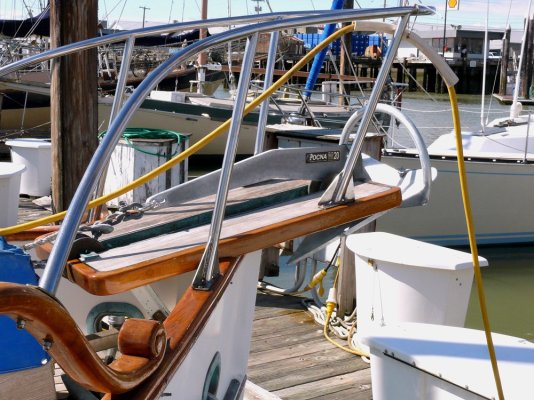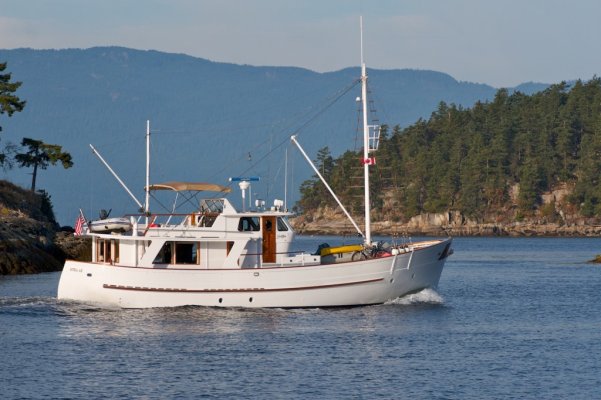I don't understand what you guys are arguing about, maybe I'm missing something.*
You use all chain because it reduces your swing assuming you have catenary, which you will unless it is very windy.*
So, if my anchor roller is 20' above the bottom and I'm using nylon rode then I'll pay out 7:1 scope = 140'.* If that pulls tight which it is very likely to do, then I'll be about 138' away from my anchor horizontally, and I'll swing in a circle with a radius of 138' which is a circle with a diameter of 276'.
Now, if I use all chain, and I pay out 4:1 (assuming it isn't very windy) = 80', and I'm now roughly 77' from my anchor horizontally, calculated with the chain running in a straight line, however as I said earlier it isn't windy so the catenary makes it even less.* For arguments sake let's say 60', and now I'm swinging in*a circle with diameter of 120' which is less than half of that of a nylon rode.
Again, if I expect wind and I'm using all chain then I'll pay out 7:1 or more and make part of that a long snubber to act as a shock absorber in case the catenary comes out completely.* Every anchor I've ever used held in all but the most extreme circumstances at 7:1 or greater, and if it didn't then you need a bigger anchor and this argument is moot.
The point I'm making and I didn't see mentioned is that in a tight anchorage it helps me to know that I'll only move back 2 boat lengths from where I drop the hook using all chain, assuming moderate winds.* If the catenary comes out then you better be using a long snub otherwise it will snatch whatever hardware it is connected to right off the deck.


